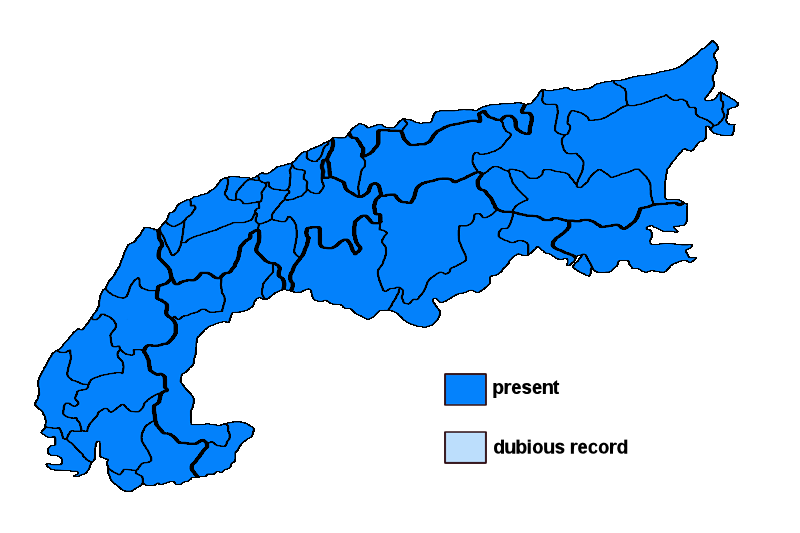Parmelia sulcata Taylor
Syn.: Parmelia saxatilis (L.) Ach. var. sulcata (Taylor) Nyl., Parmelia sulcata Taylor var. laevis Nyl.
Lichenised.
Substrate: bark, lignum, siliceous rocks, plant debris, living mosses, calciferous soil
Altitudinal range: from the mesomediterranean belt (potential vegetation: evergreen broad-leaved forests dominated by Quercus ilex) to the alpine belt (potential vegetation: treeless Alpine grasslands and tundras, to the lower limit of perennial snow and the equilibrium line of glaciers)
Note: on acid or subacid bark, exceptionally also on wood; this is certainly the most common and wide-ranging Parmelia in the Alps, also present near large urban settlements, rare only in the eu-Mediterranean belt. See also note on P. barrenoae.
Austria: Vorarlberg; Tirol; Salzburg; Kärnten; Steiermark; Oberösterreich; Niederösterreich (incl. Wien); Burgenland; Germany: Oberbayern; Schwaben; Switzerland: Appenzell; Bern; Fribourg; Glarus; Graubünden; Luzern; St. Gallen; Schwyz; Ticino; Uri; Unterwalden; Vaud; Valais; France: Alpes-de-Haute-Provence; Haute-Alpes; Alpes-Maritimes; Drôme; Isère; Savoie; Haute-Savoie; Vaucluse; Var; Italy: Friuli; Veneto; Trentino Alto Adige; Lombardia; Piemonte; Valle d'Aosta; Liguria; Slovenia: Alpine and Pre-Alpine Slovenia; Trnovsky Gozd; Liechtenstein





